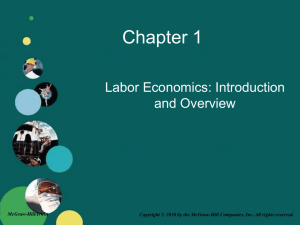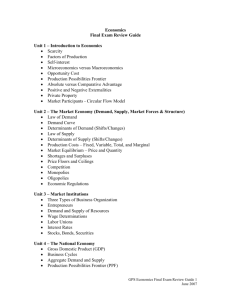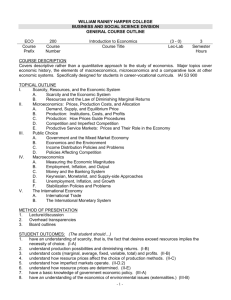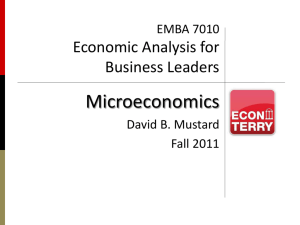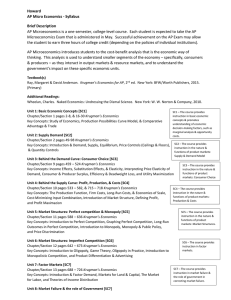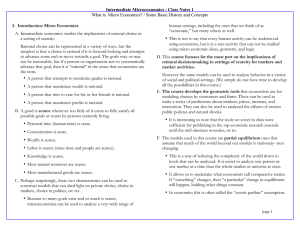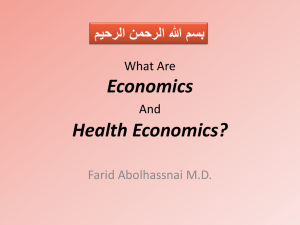ECN 201 Lecture 1
advertisement
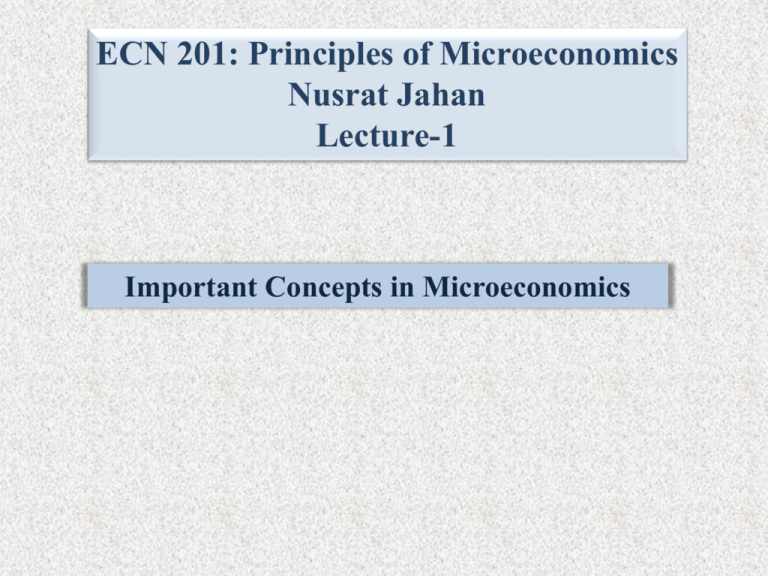
ECN 201: Principles of Microeconomics Nusrat Jahan Lecture-1 Important Concepts in Microeconomics What is Economics? Economics studies how scares resources can be efficiently used to achieve maximum satisfaction of human needs. There are two branches of Economics1. Macroeconomics Concerned with the overall performance of either the economy as a whole or its basic aggregates. 2. Microeconomics Concerned with the performance of individual units such as a person, a household, a firm or an industry. Economics can also be classified in two other branches Positive Economics: Positive economics focuses on facts and cause-and-effect relationships. It describes the facts of an economy that is, what the economy is actually like e.g. minimum wage increases unemployment. Normative Economics: Normative economics involves value judgments about what the economy should be like e.g. minimum wage should raised. Production Possibilities Frontier and Opportunity Cost Opportunity Cost: The opportunity cost of an item is what you give up to get that item. Production Possibilities Frontier: A graph that shows the various combinations of output that the economy can possibly produce given the available factors of production and the available production technology that firms can use to turn these factors into output. Food 0 1 2 3 4 5 Clothing 50 40 30 20 10 0





